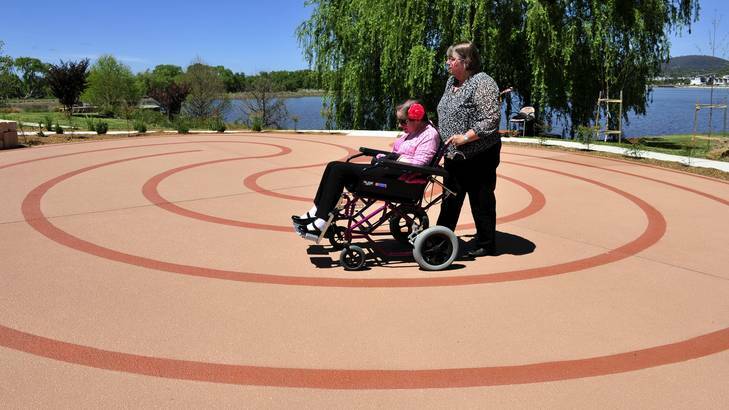Serenaded by gentle string melodies and basking in sunshine, a dozen or so people gently made the first journey through the Wallace Labyrinth, overlooking the banks of Lake Burley Griffin.
Subscribe now for unlimited access.
or signup to continue reading
The labyrinth, situated at the rear of Clare Holland House, was named after late parliamentary reporter Robin Wallace Brown, and designed with the intention of creating a physical link between a palliative care facility and the community.

These ancient designs have recently become popular globally among palliative care patients.
Mr Brown's son, A.J. Brown, spoke to the crowd gathered at the opening ceremony of the warm experience his father, who suffered from motor neuron disease, had at Clare Holland House in the last three years of his life.
''I have this vision of Wal on his second last day, when it was thanks to the palliative care program that he had the chance to decide when he had had enough.
''He was sitting there smiling with a glass of champagne on his wheelchair, and he got to exit in what he and we all believe was the most excellent of ways,'' he said.
A labyrinth is an ancient pattern that has one path to the centre and out again, and has transcended religious and cultural barriers over its 4000-year history.
The Wallace Labyrinth, suitable for wheelchairs and walking aids, was described by Professor Elizabeth Mackinlay, director at Charles Sturt University's Centre for Ageing and Pastoral Studies, as a place for reflection, calm and balance.
''It is natural that in recent times labyrinths have been used for palliative care for patients and for carers.
''In the final stages of life especially, the labyrinth may have effects that are powerful and assist in the final journey.''
Landscape architect Andrew Mackenzie, who donated his time to design and build the labyrinth, described the experience as one that would ''stay with him forever'', but said there were many challenges along the way.
''But the biggest challenge for us was imagining this [labyrinth] at this particular location, to make it open and encouraging to the community''.
Standing next to the labyrinth is a plinth bearing the words: ''for the few moments at the centre, it was as if I was in the centre of myself. I felt my own pain, but also tranquillity and comfort.''
The words are attributed to a British palliative care patient.

